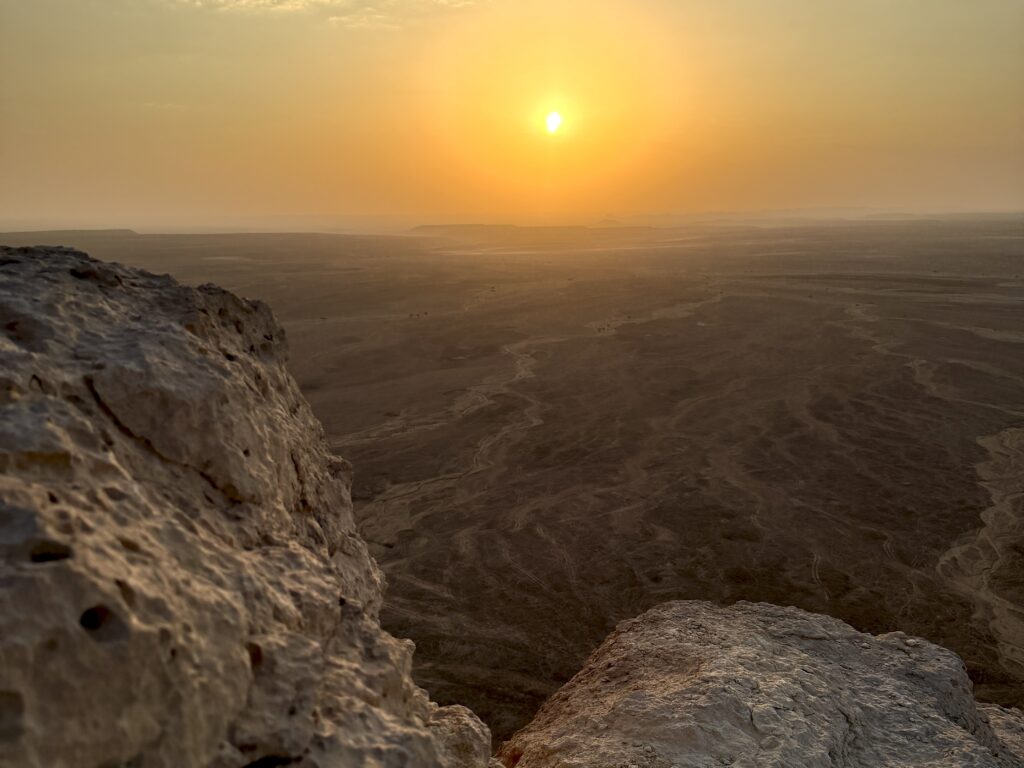Fabulous 5 days in Saudi Arabia: Riyadh, Jeddah
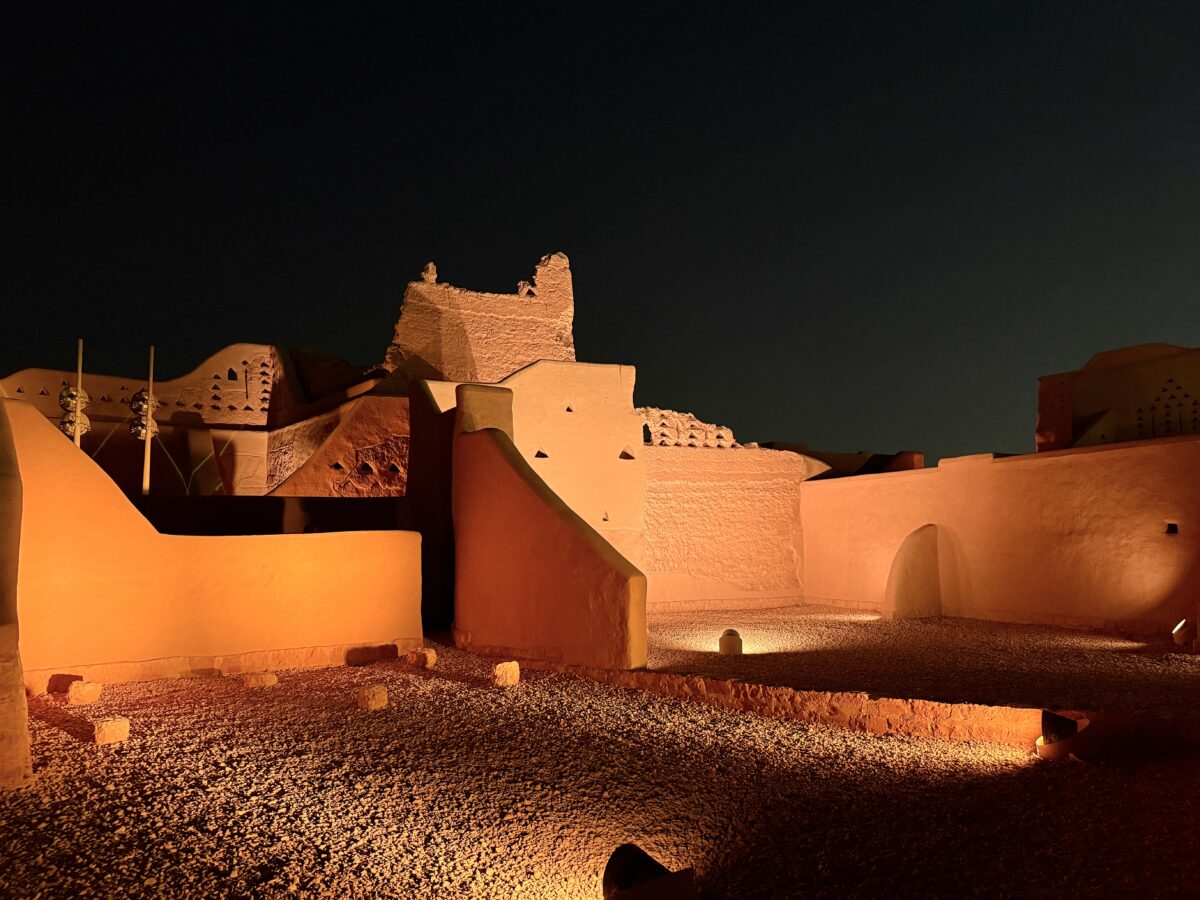
People ask me: “Why Riyadh? Why Saudi Arabia of all places?”
And honestly, it’s not such a straightforward answer. Riyadh was one of those destinations that kept popping up in conversations, social media, and occasionally elsewhere. Over time, it just stuck in my head. And one day, instead of overthinking it, I simply booked a flight.
Table of Contents
Practical considerations
1. Visa
The first step was to check the Saudi Arabia visa requirements. The official site, visitsaudi.com, is the place to start. In my case, I did need to apply for an e-visa, and the process couldn’t have been smoother. After filling out the form and making the payment, I received my e-visa within minutes, straight to my inbox. It’s a multiple-entry visa, valid for one year, and allows a maximum stay of 90 days.
2. Accomodation
My main objective was to find a hotel with a swimming pool/gym, as I wanted to combine sightseeing with some leisure time—especially given the heat in Riyadh at the end of September.
Here’s a serious tip—especially for women: double-check if the pool/gym is actually accessible to you. I found several hotels I really liked, but after digging deeper, I realized women weren’t allowed to use their pools/gym. Booking.com, which I normally use, does not provide this information. I was lucky to find out during my research related to Saudi Arabia. It is therefore important to check on the hotel’s website or directly with the hotel. Eventually, after what felt like a little search marathon, I found Aloft Olaya, which has dedicated gym and swimming hours for both men and women.
On top of it the hotel is close to the Blue Metro Line, which is the central one connecting most of the main attractions
3. Transportation
Metro: It is super modern and easy to use. All signs are in both Arabic and English, which makes it simple to navigate. There are vending machines to purchase tickets at each station. I purchased a 7-day card for 50 Saudi riyals and made full use of it. Check the metro website for details.
One thing that I, again, did not understand at first is that there are separate coaches for men and for families (women and children). It is important to check the signs above each door—see pictures. The first time, without knowing this, I started to walk into the men’s coach and was quickly pointed to the correct one.
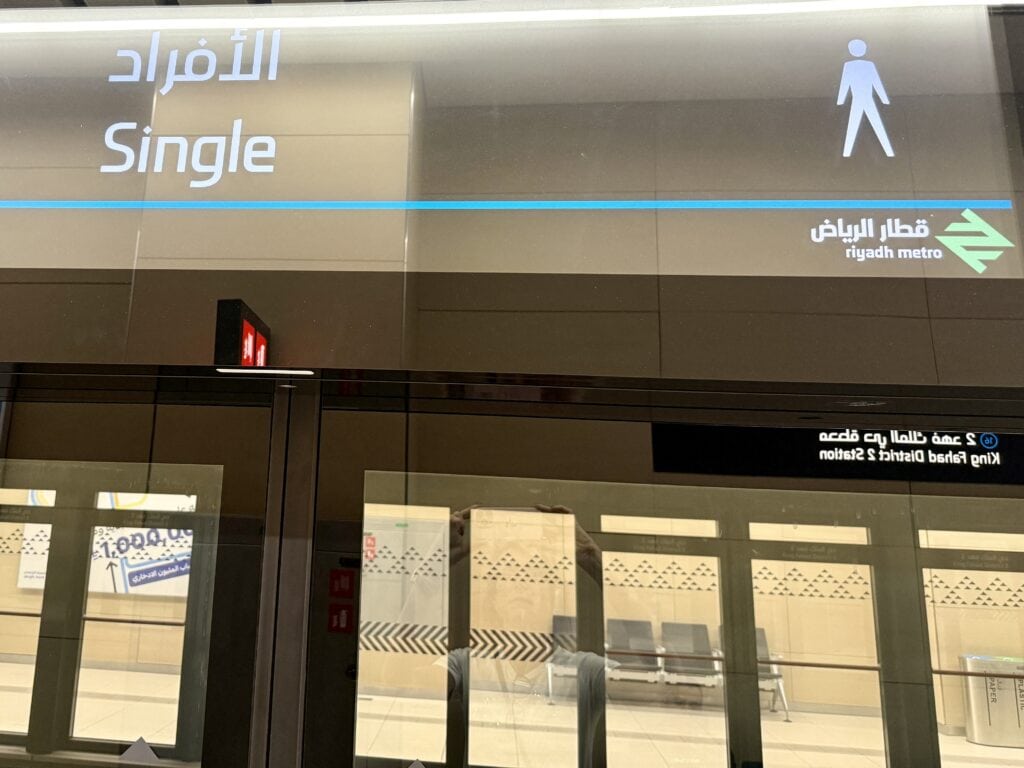


One useful tip: there are free-of-charge toilets available at the metro stations.
Uber or Bolt: Both are good alternatives to use, with Bolt generally being slightly cheaper than Uber but less available (I often received notifications that Bolt drivers were busy and I couldn’t book a ride).
4. Clothing
It was one of my biggest topics and concerns. From all the research I did, I understood that as a European woman, I can wear a full T-shirt and pants that cover my knees and most of my legs. No head cover needed. But I was still a bit afraid of whether my clothing would be acceptable. And it was. Even though the majority of local people dress according to their traditional dress code, they did not mind me, and I didn’t attract any unwanted attention. I also felt very welcome everywhere I went—coffee shops, restaurants, etc.
5. E-SIM card
As always, I went with an e-SIM from Airalo. Always works perfectly from the moment I land.
Day 1: Let the Exploration Begin
I landed in Riyadh late in the evening, so I just checked into the hotel. The next morning, I got up and started my explorations. Just to mention, it was the end of September, and the temperature at 8 a.m. was already around 30 °C. Also, it was Saturday, and I need to point out one thing — Friday and Saturday are the weekend days in Saudi Arabia. In fact, many places are closed on Friday mornings and reopen later in the afternoon.
King Fahad National Library
All my stops on the first day were along the Blue Metro Line. On my way to the King Fahad National Library metro stop, I found a coffee shop to have breakfast. At the same time, I looked at the King Fahad National Library — a large library complex and an interesting architectural structure.


Najd Oasis Walkway
Next, I took continued to the STC metro station. Just around the corner from the station is Najd Oasis Walkway — a small green oasis in the middle of the city rush and heat. I walked around simply to enjoy a bit of nature.

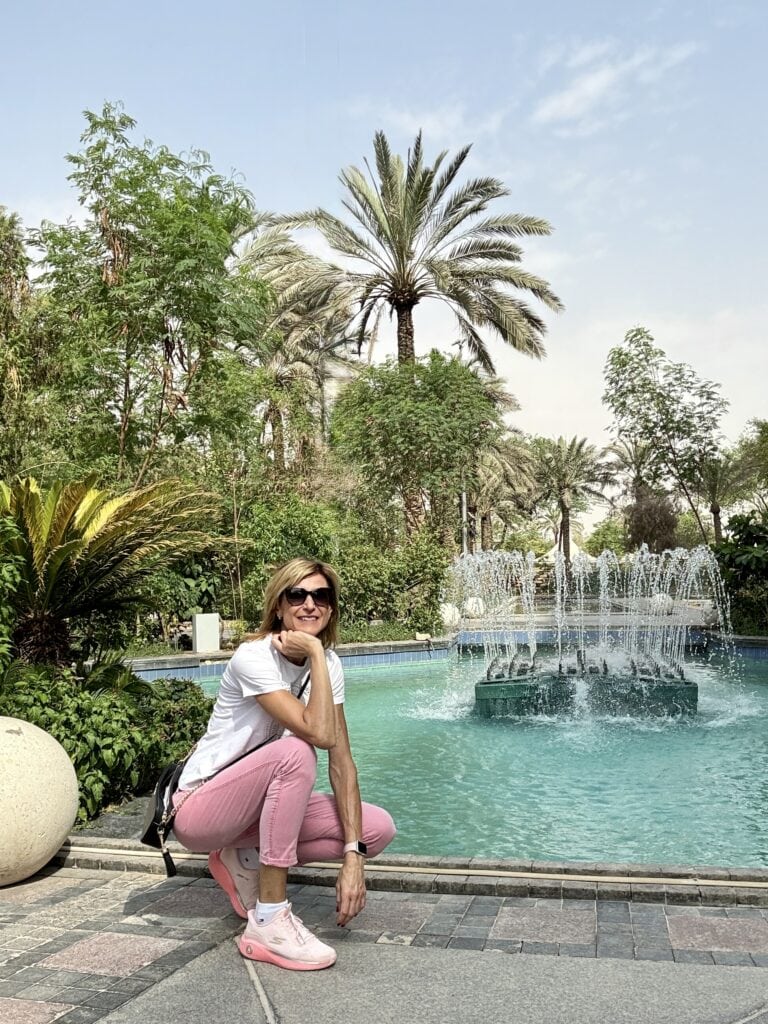
Taibah Markets
After the walk and some picture-taking, I went back to STC Station and decided to visit Taibah Markets, located at the King Fahad District 2 metro station. It’s a large market complex with many shops and different goods. I quickly realized, however, that Saturday mornings are very quiet in Riyadh. Some of the small shops were open, but the place lacked the busy vibe I wanted to experience. So I decided it would be one of the places to come back to later.
Lunch break & swimming pool time
By the time I finished, it was around 11 a.m. — about the time to escape the heat and head to the hotel swimming pool. On the way back to the hotel, I stopped by a large shopping mall located right behind the King Fahad National Library and found Urt Coffee on the second floor. Since this coffee shop had come up several times during my research, I had to try it — and their iced cappuccino was absolutely delicious.
Kingdom Tower
My next round of city walks started around 4 p.m., and this time I wanted to see one of the major city attractions — the Kingdom Tower and its Sky Bridge. The Kingdom Tower is located right next to the Al Urubah metro station, and it’s definitely not to be missed.
Finding the entrance to the Sky Bridge was a bit tricky. It’s actually located on the first floor of the Mamlaka Shopping Mall, which is attached to the Kingdom Tower. I had to ask around to find it. Eventually, I did — bought a ticket (it was about 140 SAR), took the elevator, and ended up in the skies. I was completely alone on the Sky Bridge, and it was a truly impressive experience. The view of the entire Riyadh is simply priceless.
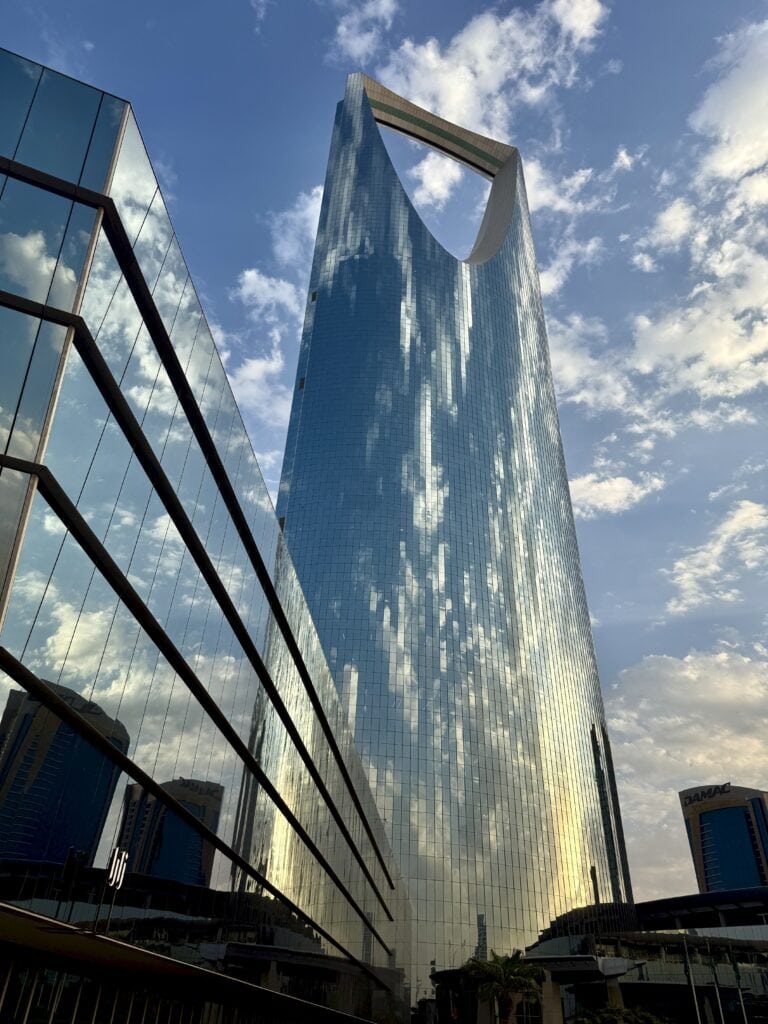

With that, I decided to start walking back alongside the metro line — just following the longOlaya Street, hoping to find a nice restaurant for dinner and to wrap up the day.
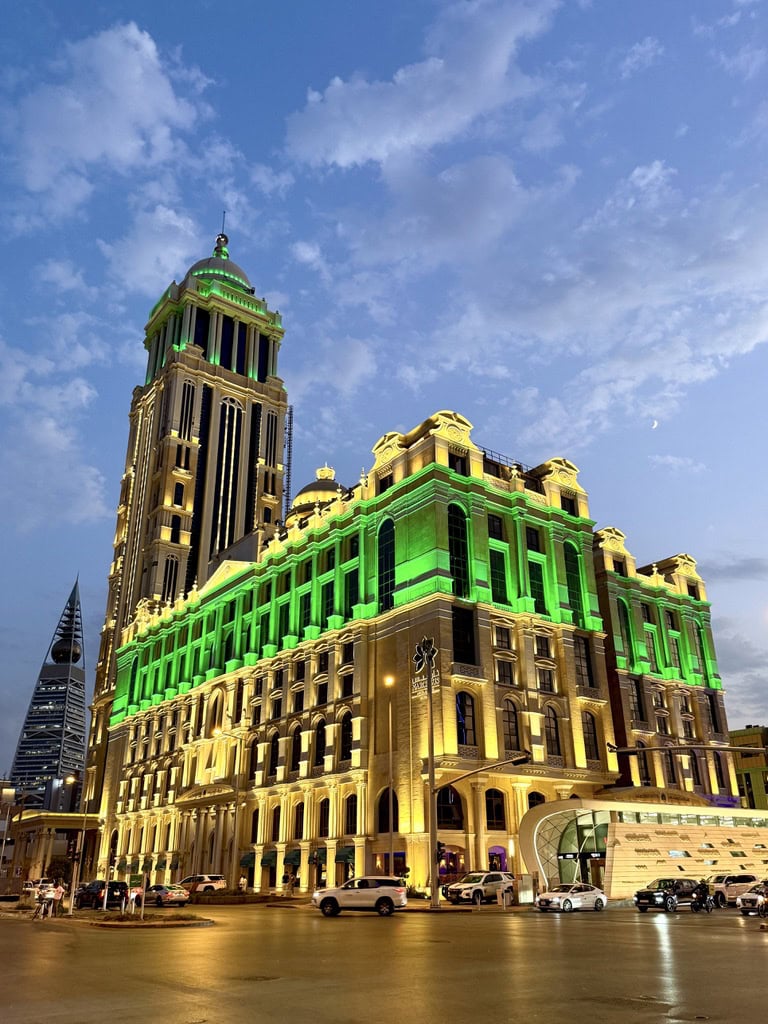

Day 2: Edge of the World
This is an absolute must-do trip. Located about 100 km from Riyadh, this place offers absolutely stunning views from 300-meter-high cliffs overlooking what used to be the ocean in ancient times. I did the tour with Riyadh Hiking.
The meeting point was right at a metro station (very convenient). We boarded a 4×4 vehicle and started the excursion. After a short stop to see camels and grab some refreshments, we reached the Edge of the World in about two hours. There, we climbed around, took lots of pictures, and watched the sunset. As the sun went down, we drove back to Riyadh. The company also offers the option to stay for an outdoor dinner at the site, but I didn’t opt for that.


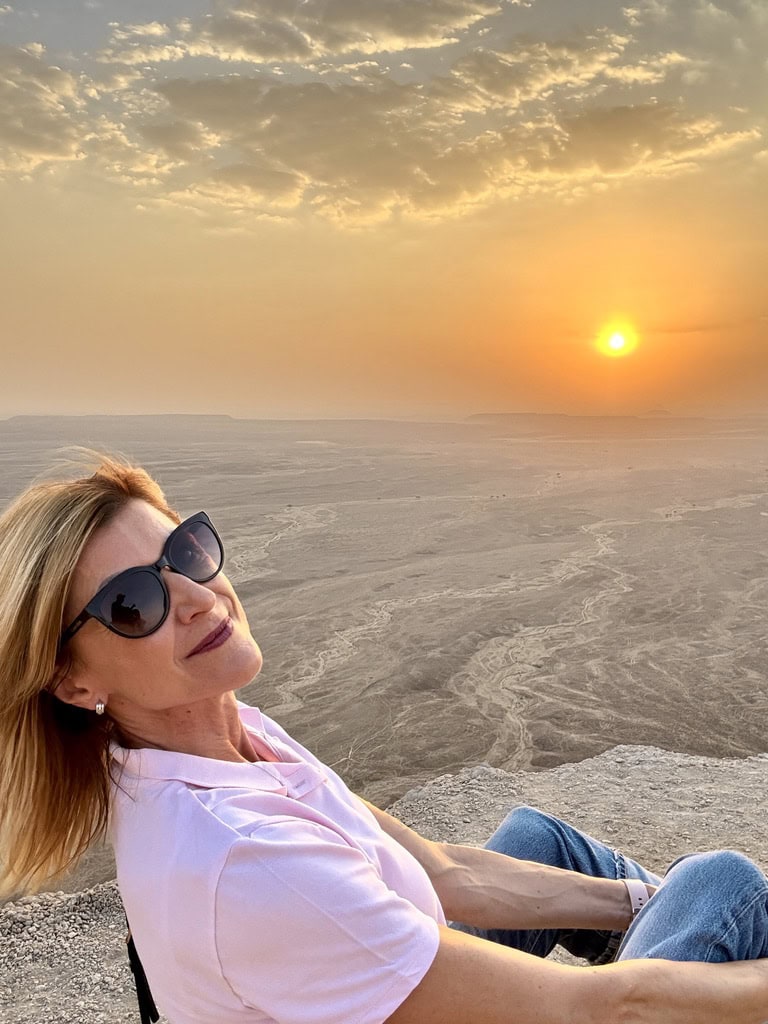
Day 3: King Abdullah Financial District (KAFD), Murabba Palace, Al Masmak Fortress
Morning: KAFD
I started the day by taking the metro to the KAFD (King Abdullah Financial District) — the truly super modern business and lifestyle area in Riyadh. The key places to see are the Financial Plaza, KAFD Grand Mosque, and KAFD Conference Center. I simply walked around, sat down for a coffee, and eventually realized how easy it is to get lost among the skyscrapers (had to ask for some help at one point 😀.


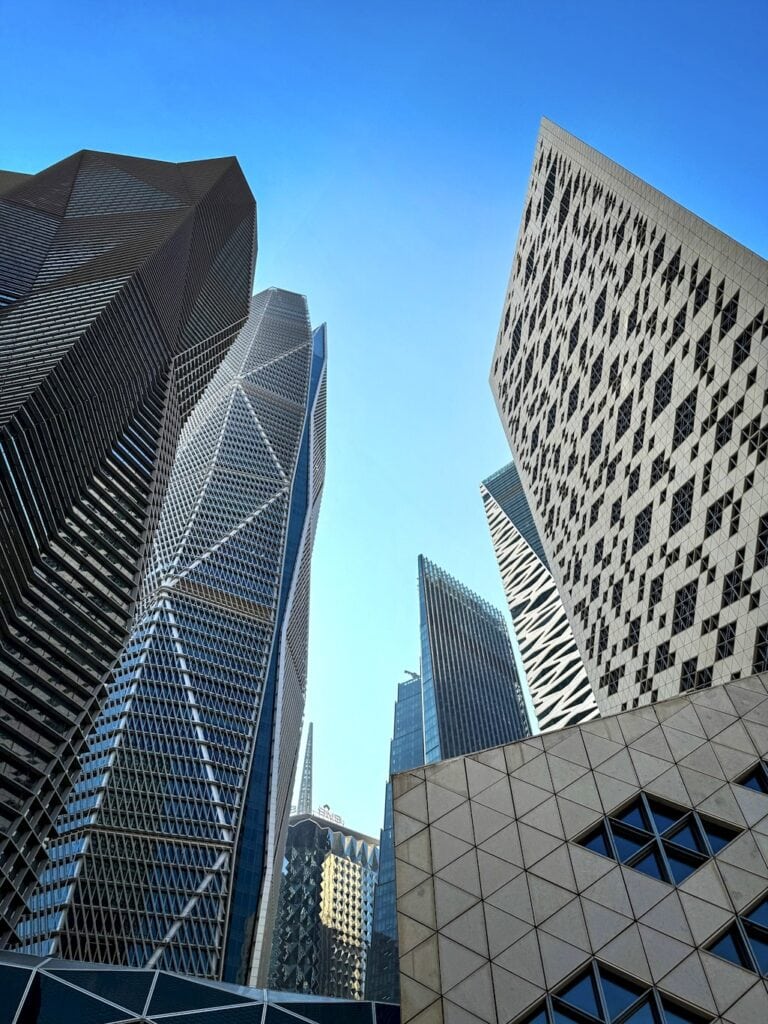
Early evening: guided tour with Aziz
I was considering visiting Murabba Palace, Al Masmak Fortress and Souq Al Zal by myself until I found a guided tour — and signed up. It was the best decision. Aziz, the guide, was so knowledgeable and passionate about his job. I spent 3.5 hours walking with him, learning so many insights into local history and culture and seeing places I would have walked past without realizing their importance.
Murabba Palace
Established by King Abdulaziz Al Saud, the founder of the Kingdom of Saudi Arabia, who made it his family home in 1939. The palace is now open to the public and has 32 rooms divided over two floors, including receptions for the king’s guests and administrative offices for his aides and guards.
I should mention that close to Murabba Palace is the National Museum. It wasn’t part of our tour, and I didn’t visit it — but it might be something to add to the itinerary.


Al Masmak Fortress
The fortress was built in the 14th century and is now a symbol of heroism and the regaining of power. It has been turned into a museum (no entry fees) and showcases historical photographs and exhibits, including the story of the Battle of Riyadh in 1902.


Al Safat Square (also known as Chop-Chop Square)
This central square in Riyadh, located close to Al Masmak Fortress, is known as the place where people sentenced to death used to be publicly beheaded.
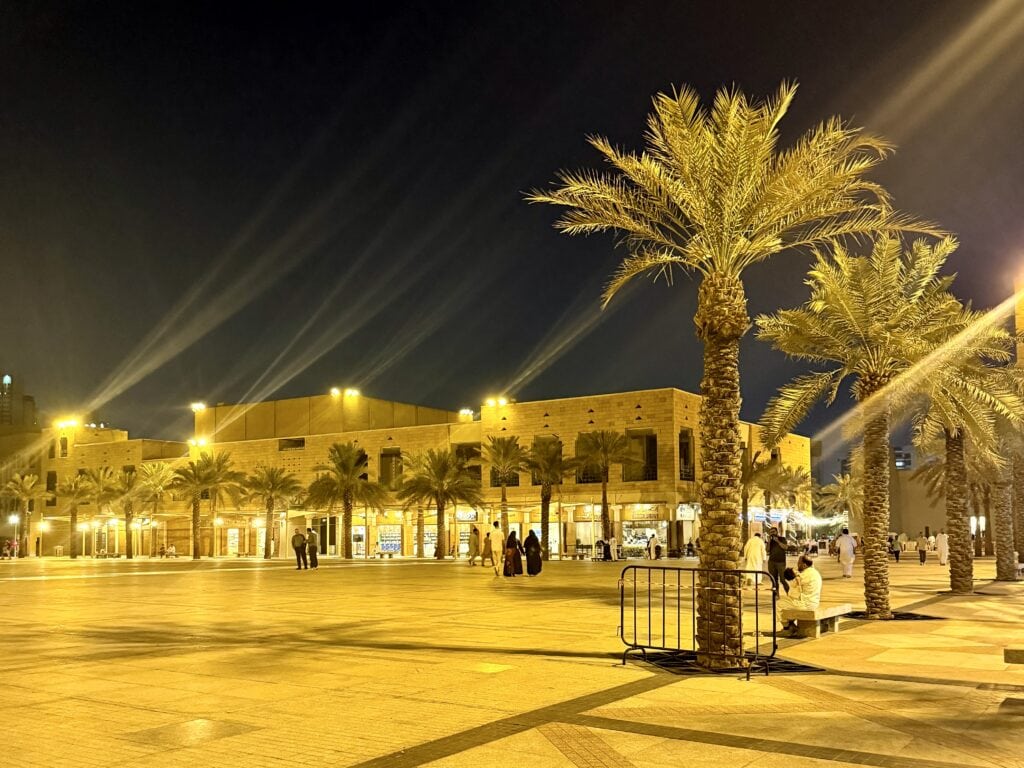
Souq Al Zal
It is the oldest market in Riyadh, spreading across about 38,000 square meters. It’s filled with small shops selling traditional clothing, carpets, shoes, and perfumes. There is currently a project to move these traditional shops into a newly built market area next to the current one. I actually consider myself lucky to have seen the original setup.

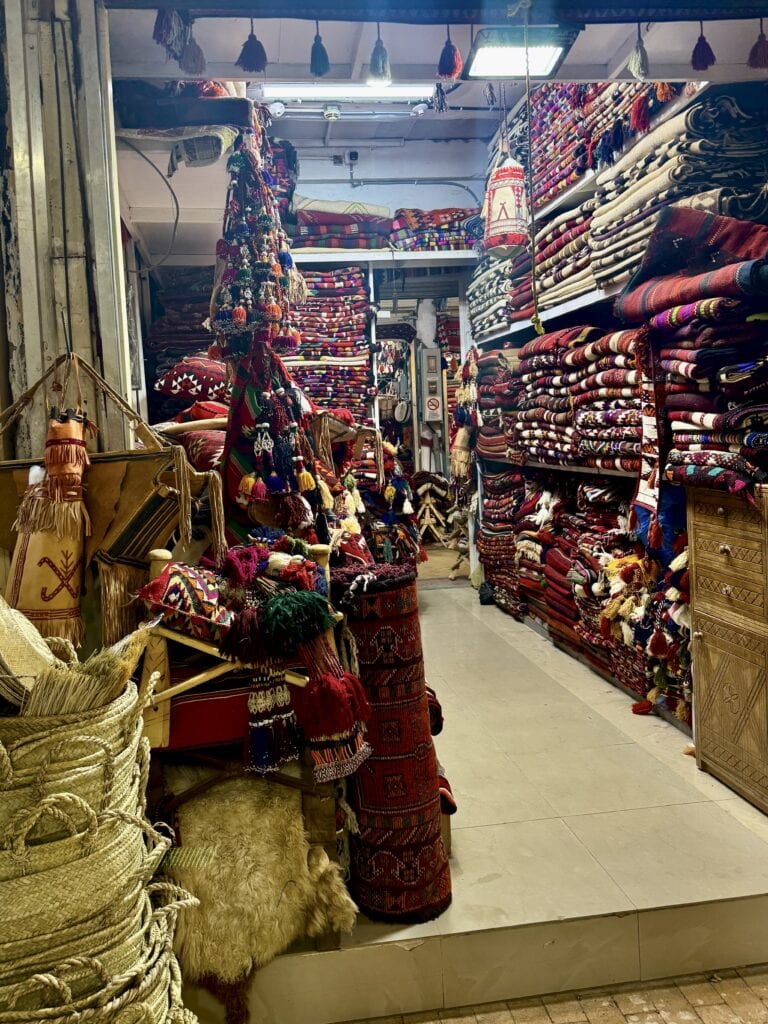
Day 4: Day Trip to Jeddah
While being in Riyadh, I made the decision to catch a morning flight to visit Jeddah. There are regular, almost hourly flights between Riyadh and Jeddah, mostly with Flynas and Flyadeal, so it’s easy to book a ticket. My return flight was approximately 120 euros.
Morning: I landed in Jeddah around 9 a.m. I tried to book both Bolt and Uber, and it turned out Uber was the more reliable option. The first place to visit was Al-Balad, the historic city center.
Al-Balad
I wasn’t sure which street or square to enter when ordering the Uber from the airport, so I simply entered “Al-Balad.” I was dropped off on the main road, trying to orient myself, and later realized that the ideal place to start exploring Al-Balad is Al Dahab Square. There’s a city map and signs pointing to key landmarks there.
The other thing I wasn’t ready for was the combination of heat and humidity. As mentioned before, I visited at the end of September, and while wearing 3/4 pants and a T-shirt, I definitely felt the strain.
Al Shafei Mosque
Built in the 17th century, it’s considered the most important mosque in Jeddah. I only saw it from the outside, but there was a sign mentioning guided tours inside. However, participation requires wearing traditional women’s attire, including a covered head and face.
While walking through the narrow streets from Al Shafei Mosque, I got so hot that I was thrilled to find a small Noir Coffee Shop. It was cool inside, and I ordered an iced latte — just what I needed! The lady serving me was very kind and even offered me a printed map of Al-Balad.
Nassif House Museum
Built in the 19th century for Omar Nasseef, a member of a wealthy merchant family and governor of Jeddah. It’s now a small museum open to the public, with no entrance fees.
One thing I quickly realized is that a lot of construction and renovation is taking place. It’s fantastic for the city, but it did slightly spoil the authentic charm of Al-Balad for now.
Local Shops
There are many local shops selling traditional goods and gold jewelry all along Al-Balad — perfect for browsing and soaking in the atmosphere.
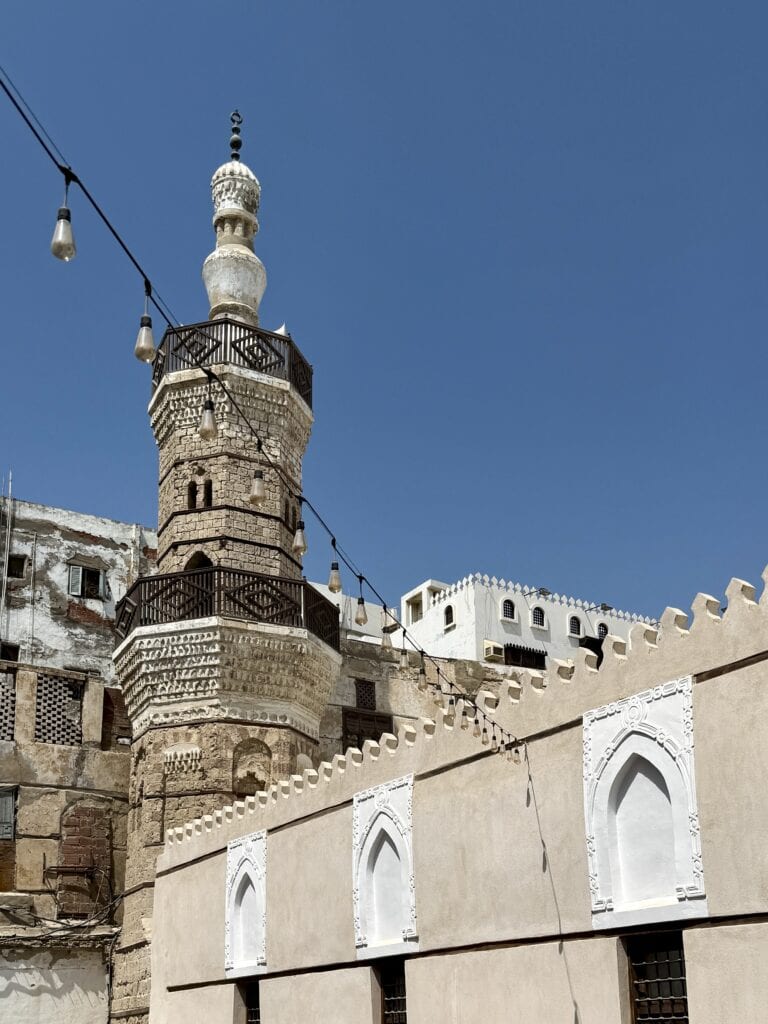

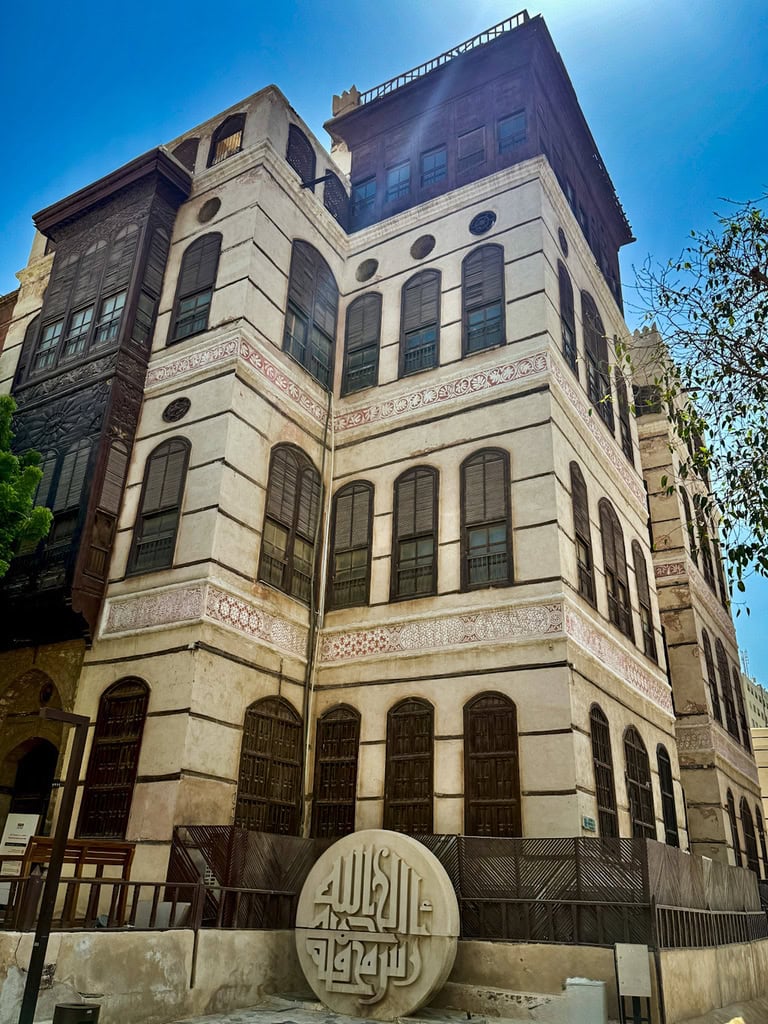
Red Sea Corniche
Around lunchtime, I decided to leave Al-Balad and head to the Red Sea Corniche.
Fakieh Aquarium
It took about 25 minutes by Uber to reach my next stop — the Fakieh Aquarium, currently the only aquarium in Saudi Arabia. I was almost the only visitor there — which was awesome! There are many tanks showcasing fish and marine life, and I especially enjoyed walking through the aquarium tunnel, watching small sharks and a big sea turtle glide above me.

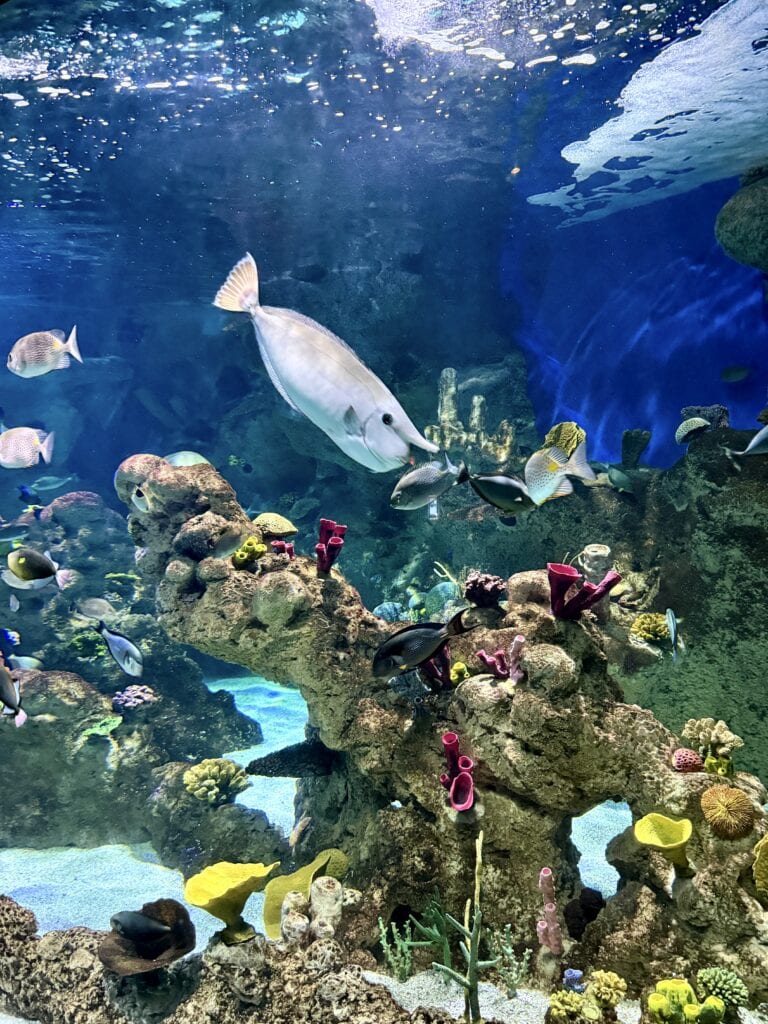

Red Sea Promenade & Red Sea Mall
From the aquarium, I started walking along the Red Sea promenade toward the Red Sea Mall. I slightly underestimated both the heat and the distance between the two places. There was a pleasant sea breeze for a while, but eventually, it got too hot to continue. About halfway through, I called an Uber again to reach the mall.
It was the perfect place to cool down, sit in a coffee shop, enjoy a late lunch, and browse some shops.
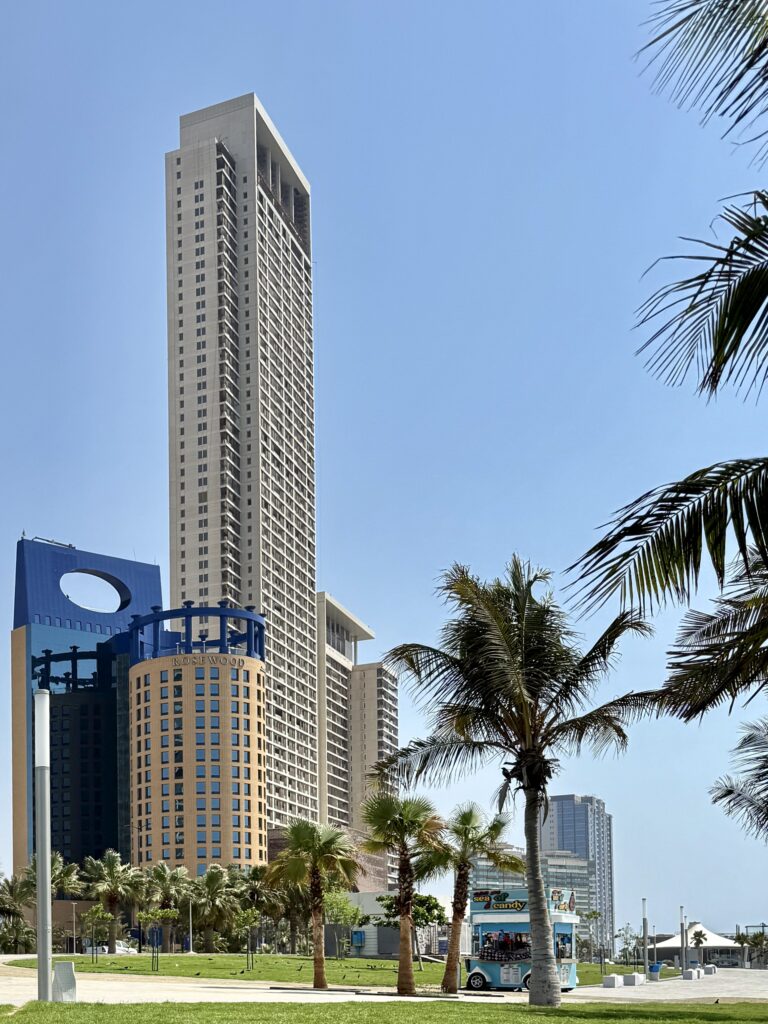
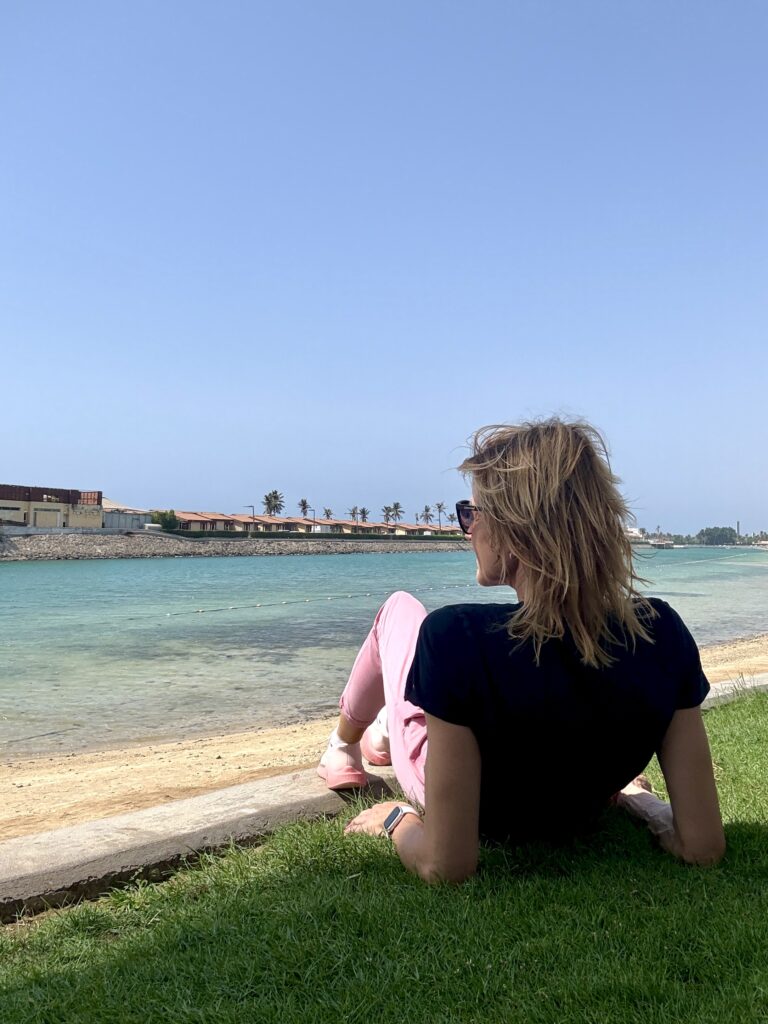

Al Rahma Floating Mosque
This was the last place I wanted to visit. However, after realizing the distance from the Red Sea Mall and considering my flight schedule, I didn’t manage to see it. Well, perhaps a reason to return one day!
Returning to Riyadh in the evening, I took the metro back to my hotel. The Yellow Metro Line is located right at the terminal, and without luggage, it was very efficient.
Day 5: Diriyah
Often called the “birthplace” of the Kingdom of Saudi Arabia, Diriyah is a must-visit. It’s important to book a ticket online through the official website: https://www.diriyah.sa/en.
To book, I had to create an account on the website. I booked mine on the day of my visit, and it was free of charge. I received the ticket by email and added it to my Apple Wallet. My understanding is that I visited during the off-season, which is why entry was free. During the season, the ticket costs 50 SAR, which can be redeemed in one of the restaurants — but it’s best to check the latest details on their website.
I wasn’t entirely sure how to plan my visit, as there are several sections to explore. Luckily, I got advice from fellow travelers I met during the Edge of the World tour. So here’s how my evening visit went, considering that the key site, At-Turaif, opens at 5 p.m.
I took an Uber to the entrance of Bujairi Terrace, aiming to arrive around 5 p.m. (no metro stop nearby at this point). They checked my ticket and let me in. From Bujairi Terrace, I walked directly toward At-Turaif. The visitor center is located at the entrance, and local guides offer their services there. I decided to explore on my own, reading the information boards. Some stops also have QR codes that can be scanned to access an audio guide.
At-Turaif
The original capital of the First Saudi State between 1727 and 1818, At-Turaif is now a UNESCO World Heritage Site.
I spent about 1.5 hours wandering around the site and ended up near the entrance to Wadi Hanifa Park. Since it was already evening, I only walked through part of it before returning to the visitor center. I didn’t want to miss the interactive projection scheduled for 7 p.m. in English.
About 10 minutes before the show, they opened the staircase leading to the rooftop of the information center, where benches are set up for visitors to watch. It’s definitely worth including in your At-Turaif visit.
Bujairi Terrace
After the projection, I headed back to Bujairi Terrace to find a place for dinner. The truth is, the restaurants there are not cheap — but it’s part of the overall experience. Since I wasn’t in the mood for anything fancy, I found a smaller, simpler restaurant right at the entrance to the terrace.
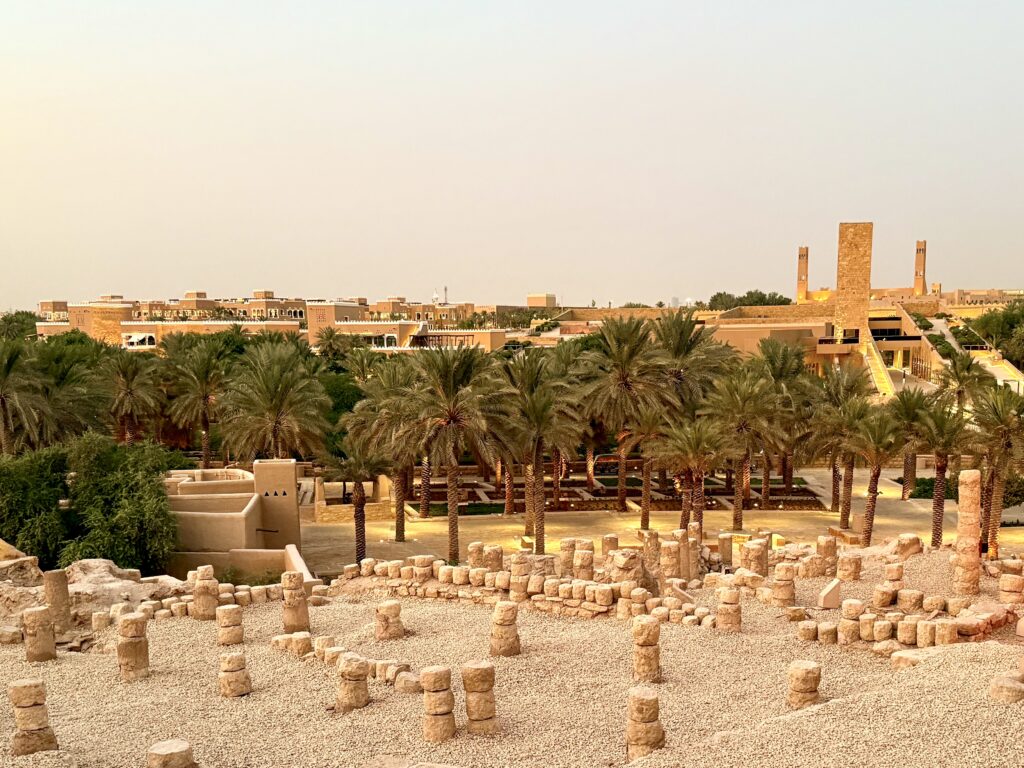
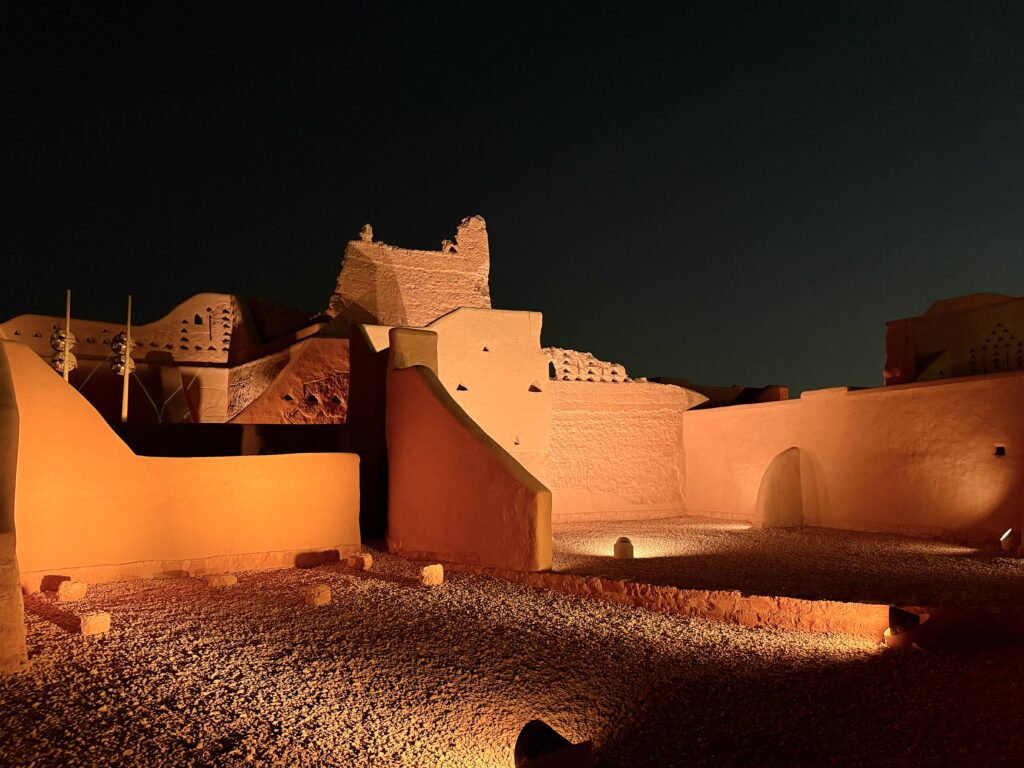


And that’s how my time in Riyadh came to an end.
I should mention there were two places I wanted to explore but didn’t manage to:
- World Boulevard: an entertainment district on the outskirts of Riyadh. It only opens for certain months of the year and was closed during my visit.
- Diplomatic Quarter: with its parks and garden trails. I wanted to visit the Tuwaiq Garden, see the palace, and walk around the area.
Perhaps some other time! And if you’ve made it to the end of this blog — I wish you a wonderful stay in Saudi Arabia.
